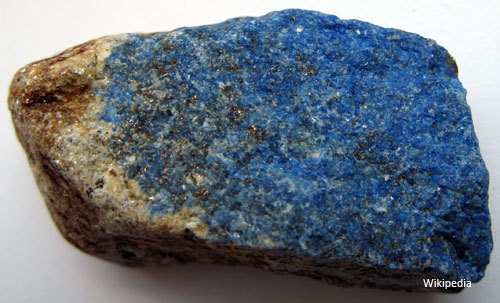Chandrawati Excavation leads to discovery of Lapis Lazuli, an ancient stone
The discovery of Lapis Lazuli, a semi precious stone at the archaeological site at Chandrawati in Sirohi district recently, indicates trade relations between the Parmar dynasty and Afghanistan, way back in the Harappan times.

The discovery of Lapis Lazuli, a semi precious stone at the archaeological site at Chandrawati in Sirohi district recently, indicates trade relations between the Parmar dynasty and Afghanistan, way back in the Harappan times.
The second season of excavation that commenced from January 12 is nearing its completion as the team is set to wind up the digging task this week.
The project is a joint venture of the archaeological department and Rajasthan Vidyapeeth University, Udaipur.
“Lapis is a semi-precious stone prized since antiquity for its intense blue color. It has been mined in the Badakhshan province of Afghanistan for 6,500 years. The trade in the stone is ancient enough for lapis jewelry to have been found at pre-dynastic Egyptian sites, and lapis beads at Neolithic burials in Mehrgarh, the Caucasus, and even as far from Afghanistan as Mauritania,” said project director Prof JS Kharakwal of JRN Rajasthan Vidyapeeth.
This opaque, deep blue gemstone has a grand past. It was among the first gemstones to be worn as jewelry and worked on. At excavations in the ancient centers of culture around the Mediterranean, archaeologists have again and again found among the grave furnishings decorative chains and figures made of lapis lazuli – clear indications that the deep blue stone was already popular thousands of years ago among the people of Mesopotamia, Egypt, Persia, Greece and Rome.
“It is early to say now that the Chandrawati people had this stone for some religious or astrological purpose, same time, it cannot be ruled out that they knew its importance because the 33 temple complexes, remains of many Hindu and Jain deities explored here has established the fact that religion was given prominence by the people 1,000 years ago,” Prof Kharakwal claimed.
Source: TOI
To join us on Facebook Click Here and Subscribe to UdaipurTimes Broadcast channels on GoogleNews | Telegram | Signal


